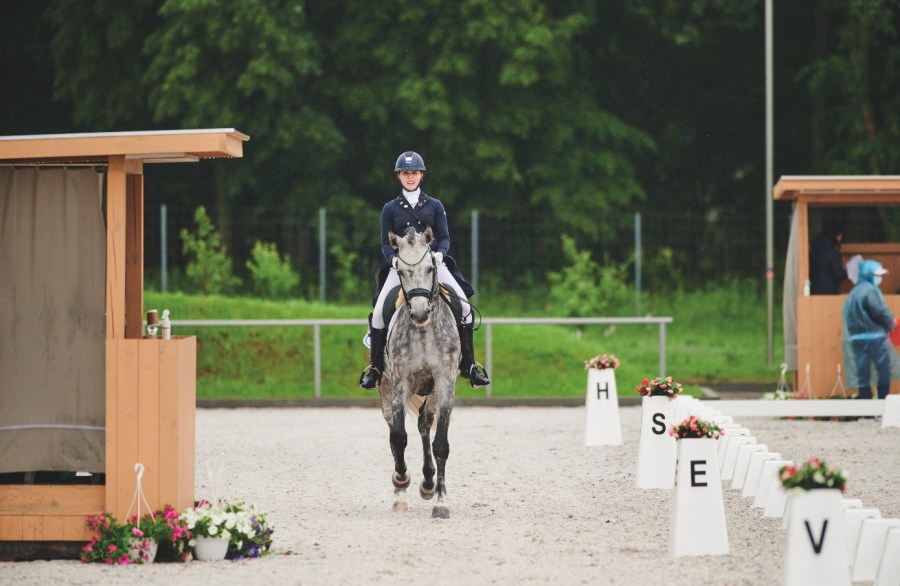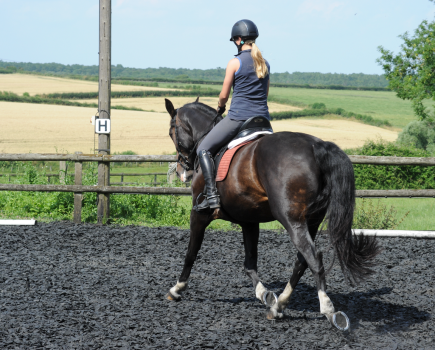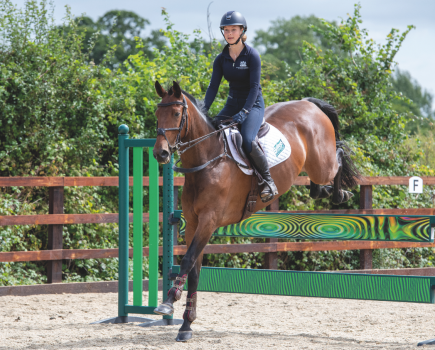A poor start can throw off the rest of your test and doesn’t give the judge the right first impression, so it’s key to nail the first move: entering at A. List 4 dressage judge and trainer Alex Gingell shares how you can set yourself up for success in every test by perfecting your entrance.
“This movement is the start of every dressage test,” says Alex, “but it’s surprising by how many riders get it wrong. Whether you’re entering in trot or canter, whether you halt at X or not, this movement really does set the tone for the rest of your test, so it’s important to ride it well.”
Entering the arena on a wobbly line can make it difficult to ride straight, which can make you crooked. A good entrance will set you up for the rest of your test.
How to ride it
By doing plenty of practice at home, you’ll be confident and comfortable when you enter your dressage test. This will mean your horse stays soft and relaxed, rather than tense and resistant to your aids.
- Ask a friend to stand at C to check you’re straight as you enter the arena and ride up the centre line. If not, try again. You might find it helpful to place two markers, such as cones, just inside A for you to pass between and help you learn exactly where you want to be for the correct A-C line.
- Practise riding halt on the centre line, making sure your horse is square and straight. If you horse has a tendency to let their quarters drift out or not stand up square in the halt, practise halting along a fence or hedge line first — the border will help teach then horse to stay straight. Most importantly, make sure you are consistent. Never accept a poor halt — ask your horse to do it again so that they learn the only way to do it is the correct way. Bad habits are easy to learn and tricky to unlearn!
- Look up towards the end of the arena.
- Ensure your horse stays straight by keeping your legs at his side.
- Ride forward — a horse being ridden with a restrictive hand is more likely to wobble off their line.
- Keep your hands together to keep control of your horse’s shoulders.
Common errors to avoid
What the judge doesn’t want to see:
- Your horse drifting to the left or right
- A change in rhythm
- Resistance to your aids or in the contact
- Crookedness
Top tips
There are certain things you can do to set you and your horse up for the best possible arena entry that you are capable of, including:
- Turn to the arena off your horse’s better rein. If he generally works better on the left rein, for example, circle left on to your your centre line.
- Make sure you are riding a straight line before you enter at A. The space outside the arena can be quite tight, but make the use of whatever space there is so that your horse is working forward in a straight line for at least two or three of their body lengths before you get inside the arena. This means you aren’t having to spend the first few strides of your test straightening them up.
- Establish a regular trot (or canter, depending on the class you are competing in) rhythm before you get into the arena and then maintain it — don’t fiddle. Concentrate on allowing your horse to work actively forward with an allowing hand. This will help avoid any drifting off your line.
- Think about your own position and sit up straight with your shoulders back and eyes ahead. Avoid looking down at your horse, which it can be tempting to do, because this is likely to cause you to tip forward and affect your horse’s balance.
Main image: copyright Shutterstock
Meet the expert: Alex Gingell is a British Dressage list 4 judge and trainer. He and his wife Jayne founded and run Hack Up, an award-winning bespoke supplement company for horses.









